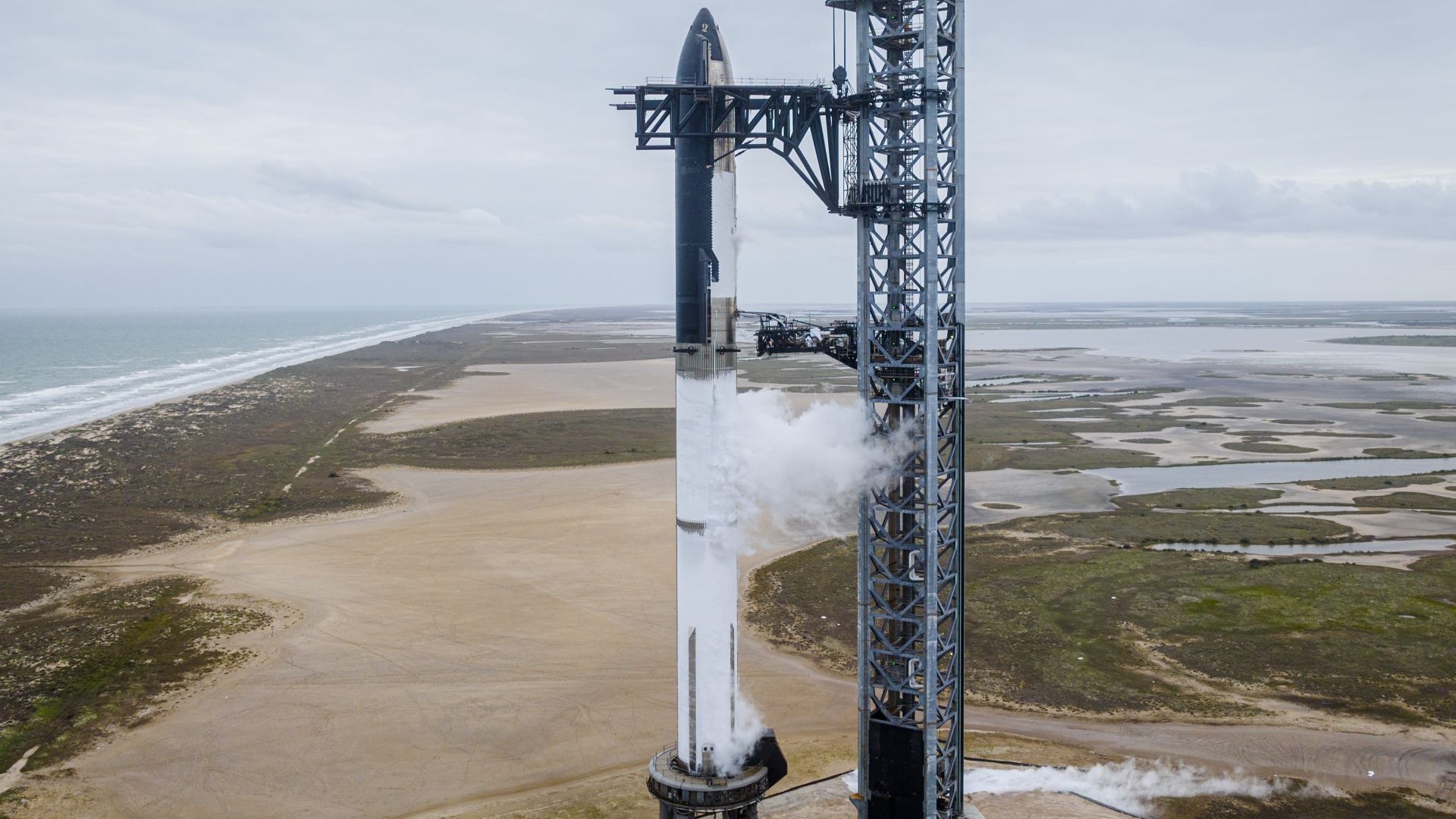
SpaceX's huge new Starship vehicle could launch on its first-ever orbital test flight a little over a month from now, if all goes according to plan.
SpaceX is now tentatively eyeing mid- to late April for that epic mission, which will lift off from the company's Starbase facility in South Texas.
"SpaceX will be ready to launch Starship in a few weeks, then launch timing depends on FAA license approval. Assuming that takes a few weeks, first launch attempt will be near end of third week of April, aka …," SpaceX founder and CEO Elon Musk said via Twitter on Thursday (March 16), referring to the U.S. Federal Aviation Administration.
The "aka..." bit, by the way, is presumably a nod to the possibility that Starship could launch on April 20, which is a sort of holiday for cannabis culture. Musk is fond of making 4/20 references and jokes.
Related: SpaceX's 1st orbital Starship looks supercool in these fueling test photos
SpaceX will be ready to launch Starship in a few weeks, then launch timing depends on FAA license approval. Assuming that takes a few weeks, first launch attempt will be near end of third week of April, aka …March 16, 2023
Starship consists of a giant first-stage booster called Super Heavy and a 165-foot-tall (50 meters) upper-stage spacecraft known as Starship. Both stainless-steel vehicles are designed to be fully and rapidly reusable, and both are powered by SpaceX's next-gen Raptor engine — 33 for Super Heavy and six for Starship.
Starship has flown before, but only on short hops that reached a maximum of 6 miles (10 kilometers) or so above Earth. And those vehicles were upper-stage prototypes sporting three or fewer Raptors; no Super Heavy variant has ever left the ground.
Get the Space.com Newsletter
Breaking space news, the latest updates on rocket launches, skywatching events and more!
That will change on the coming orbital try, which SpaceX has been working toward for a long time now. (The most recent Starship test flight occurred nearly two years ago, in May 2021.)
The tentative target date has shifted to the right repeatedly during this stretch, which isn't surprising, given that Starship is an entirely new vehicle — and one that's very different from SpaceX's currently operational rockets, the Falcon 9 and Falcon Heavy. Both Falcons, for example, employ Merlin engines rather than Raptors.
Musk said recently that that Starship has about a 50% chance of success on its debut orbital flight, whenever that liftoff occurs. But he also stressed that SpaceX is assembling multiple Starship vehicles at Starbase at the moment, and one of them is bound to succeed.
"So I think we've got, hopefully, about an 80% chance of reaching orbit this year," Musk said on March 7 during an interview at the Morgan Stanley Conference. "It'll probably take us a couple more years to achieve full and rapid reusability."
Mike Wall is the author of "Out There" (Grand Central Publishing, 2018; illustrated by Karl Tate), a book about the search for alien life. Follow him on Twitter @michaeldwall. Follow us on Twitter @Spacedotcom or Facebook.
Join our Space Forums to keep talking space on the latest missions, night sky and more! And if you have a news tip, correction or comment, let us know at: community@space.com.

Michael Wall is a Senior Space Writer with Space.com and joined the team in 2010. He primarily covers exoplanets, spaceflight and military space, but has been known to dabble in the space art beat. His book about the search for alien life, "Out There," was published on Nov. 13, 2018. Before becoming a science writer, Michael worked as a herpetologist and wildlife biologist. He has a Ph.D. in evolutionary biology from the University of Sydney, Australia, a bachelor's degree from the University of Arizona, and a graduate certificate in science writing from the University of California, Santa Cruz. To find out what his latest project is, you can follow Michael on Twitter.









